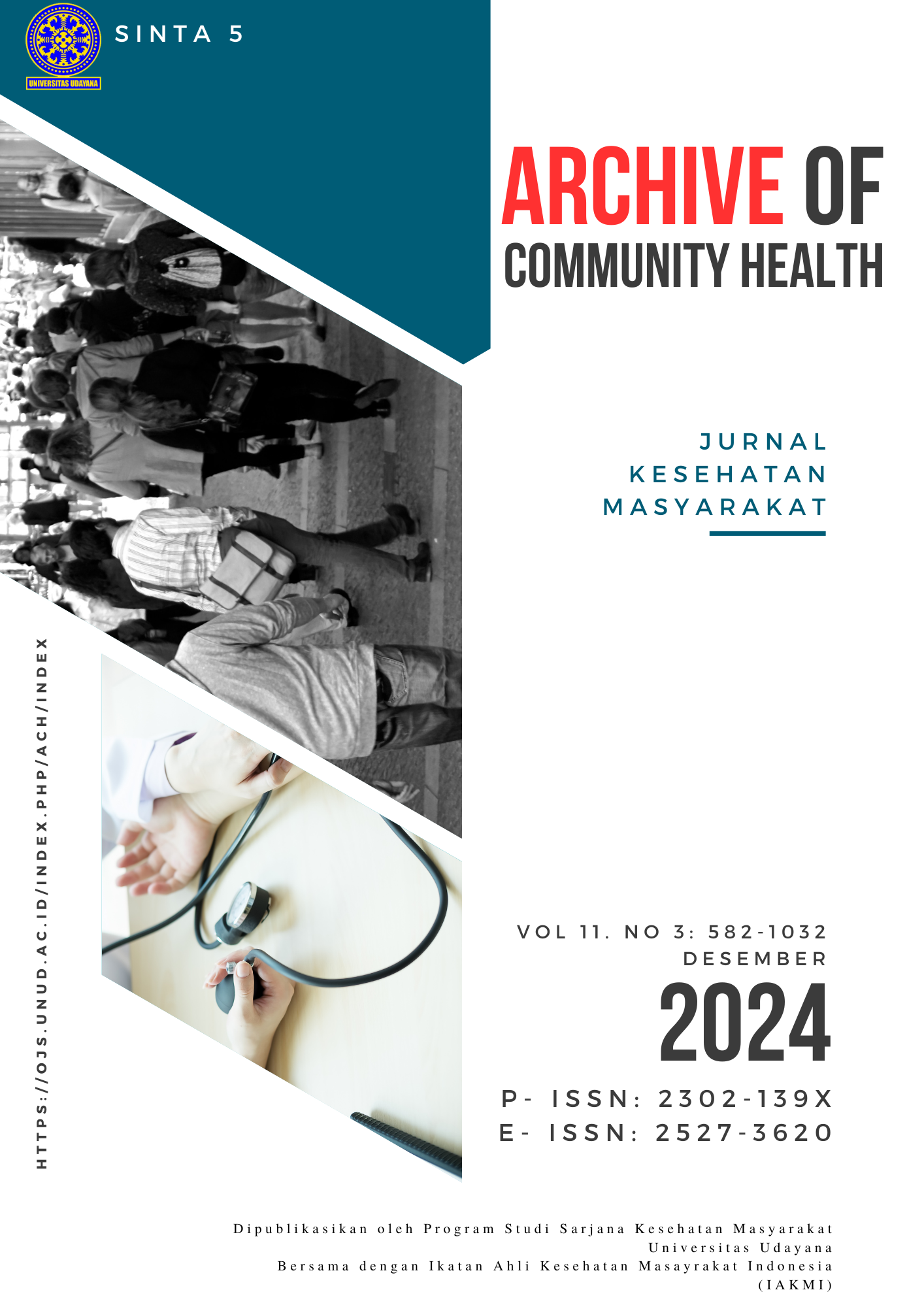PERBEDAAN INTENSITAS EMESIS GRAVIDARUM SEBELUM DAN SESUDAH DIBERIKAN AROMATERAPI CENGKEH DI PRAKTIK MANDIRI BIDAN WILAYAH KERJA KECAMATAN KUTA SELATAN
Abstract
ABSTRAK
Emesis gravidarum adalah gejala yang wajar dan sering terjadi pada kehamilan trimester pertama. Prevalensi kejadian emesis gravidarum di Provinsi Bali khususnya di Kabupaten Badung sebanyak 76,8%. Pengobatan untuk mengatasi emesis gravidarum pada ibu hamil dapat dilakukan dengan terapi non farmakologi, yaitu dengan aromaterapi cengkeh. Penelitian ini bertujuan untuk mengetahui perbedaan emesis gravidarum sebelum dan sesudah diberikan aromaterapi cengkeh di Praktik Mandiri Bidan wilayah kerja kecamatan Kuta Selatan. Metode penelitian adalah pre experimental design dengan rancangan penelitian one group pre-post test design dengan sampel sebanyak 25 orang dengan teknik purposive sampling. Data dianalisis menggunakan wilcoxon test untuk membandingkan emesis gravidarum sebelum dan sesudah diberikan intervensi dengan hasil p value =0.000<0,05, sehingga terdapat perbedaan emesis gravidarum sebelum dan sesudah diberikan intervensi. Simpulan dalam penelitian ini adalah aromaterapi cengkeh dapat menurunkan emesis gravidarum pada ibu hamil di Praktik Mandiri Bidan wilayah kerja Puskesmas Kuta Selatan. Adapun saran yang diberikan agar Paktik Mandiri Bidan dapat menerapkan asuhan komplementer dengan aromaterapi cengkeh dalam menurunkan emesis gravidarum.
Keywords: Aromaterapi; Cengkeh; Emesis gravidarum; Ibu hamil
ABSTRACT
Emesis gravidarum is a natural symptom and often occurs in the first trimester of pregnancy. The prevalence of emesis gravidarum in Bali Province, especially in Badung Regency, is 76.8%. Treatment to overcome emesis gravidarum in pregnant women can be done with non-pharmacological therapy, namely with clove aromatherapy. This study aims to determine the differences in emesis gravidarum before and after being given clove aromatherapy at the Independent Midwife Practice in the South Kuta sub-district. The research method was in pre-experimental design research with a one group pre-post test design with a sample of 25 people using purposive sampling technique. Data were analyzed using the Wilcoxon test to compare emesis gravidarum before and after being given the intervention with the result p value = 0.000 <0.05, so that there were differences in emesis gravidarum before and after being given the intervention. The conclusion in this study is that clove aromatherapy can reduce emesis gravidarum in pregnant women at the Mandiri Midwife Practice in the working area of the South Kuta Health Center. As for the suggestions given so that the Mandiri Midwife Practice can apply complementary care with clove aromatherapy in reducing emesis gravidarum.
Keywords: Aromatherapy; Clove; Emesis gravidarum; Pregnant mother














